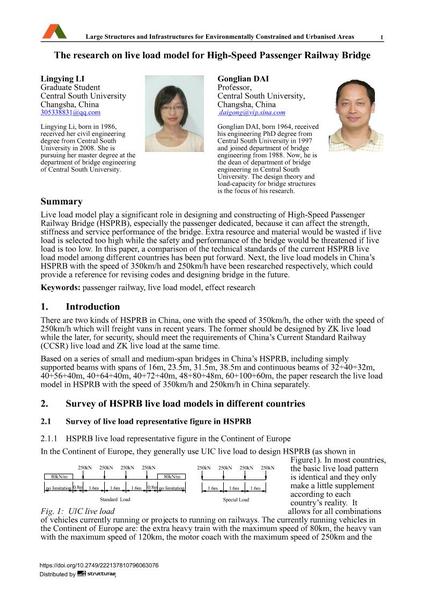The research on live load model for High-Speed Passenger Railway Bridge

|
|
|||||||||||
Bibliographic Details
| Author(s): |
Lingying Li
Gonglian Dai |
||||
|---|---|---|---|---|---|
| Medium: | conference paper | ||||
| Language(s): | English | ||||
| Conference: | IABSE Symposium: Large Structures and Infrastructures for Environmentally Constrained and Urbanised Areas, Venice, Italy, 22-24 September 2010 | ||||
| Published in: | IABSE Symposium Venice 2010 | ||||
|
|||||
| Page(s): | 622-623 | ||||
| Total no. of pages: | 8 | ||||
| Year: | 2010 | ||||
| DOI: | 10.2749/222137810796063076 | ||||
| Abstract: |
Gonglian DAI, born 1964, received his engineering PhD degree from Central South University in 1997 and joined department of bridge engineering from 1988. Now, he is the dean of department of bridge engineering in Central South University. The design theory and load-capacity for bridge structures is the focus of his research. Live load model play a significant role in designing and constructing of High-Speed Passenger Railway Bridge (HSPRB), especially the passenger dedicated, because it can affect the strength, stiffness and service performance of the bridge. Extra resource and material would be wasted if live load is selected too high while the safety and performance of the bridge would be threatened if live load is too low. In this paper, a comparison of the technical standards of the current HSPRB live load model among different countries has been put forward. Next, the live load models in China’s HSPRB with the speed of 350km/h and 250km/h have been researched respectively, which could provide a reference for revising codes and designing bridge in the future. |
||||
| Keywords: |
passenger railway live load model effect research
|
||||

